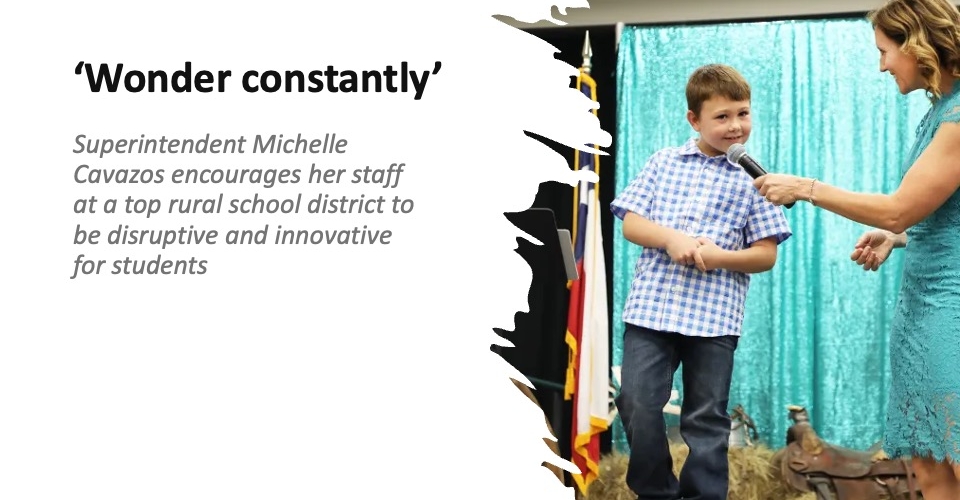As education leaders, we are at the forefront of decisions about the role of technology in our schools, influencing how it shapes the experiences of students, teachers and staff. In the past decade, we’ve seen an accelerated adoption of technology in education, from online learning platforms to AI-driven tools that personalize student learning.
But as we navigate this digital landscape, a critical question arises: Does technology make us more human or less? This question isn’t merely philosophical, it is central to how we approach teaching, learning, and leading our schools.
Technology has the power to enhance education but it also has the potential to disrupt the very things that make teaching and learning deeply human endeavors. Understanding this dual nature of technology is crucial for us as we work to create environments that foster both academic growth and human connection.
Technology makes education more human
On one side of the argument, technology enhances the humanity of education by fostering connections, personalizing learning and empowering teachers and students alike. In classrooms, technology allows teachers to reach students in ways previously unimaginable. Virtual classrooms, video conferencing and online collaboration tools enable students to access learning from anywhere, ensuring that education is more inclusive and equitable. Technology opens doors for students who may have been marginalized in traditional settings whether due to physical disabilities, learning differences or geographic isolation.
Further, technology personalizes education. Tools like adaptive learning platforms adjust to students’ individual needs, allowing them to learn at their own pace. AI-driven software analyzes students’ progress and tailors instruction to fill gaps or accelerate learning. In this way, technology enables teachers to provide more individualized attention, making the learning experience more human-centered and compassionate.
For teachers, technology offers an opportunity to offload administrative tasks, freeing up more time for meaningful interaction with students. Grading software, data analysis tools and digital lesson planning systems streamline the workload, allowing educators to focus on building relationships and fostering students’ intellectual and emotional growth. In many ways, technology enables teachers to be more present and engaged in the classroom, which is at the heart of effective teaching.
Technology makes education less human
Despite these advantages, there is a strong argument that technology, when overused or misapplied, can diminish the human aspects of education. One of the most significant concerns is that technology can create distance rather than connection. In a world where online learning platforms have replaced face-to-face interactions, students may miss out on the essential human elements of education… empathy, social skills and the richness of in-person collaboration.
For teachers, the constant pressure to integrate the latest technologies can create a sense of detachment from their students. When lessons are driven by algorithms or delivered via screens, the role of the teacher risks becoming one of a content manager rather than a mentor, guide and emotional anchor for students. Research suggests that students learn best through relationships. Technology, while a powerful tool, can sometimes undermine the depth of those relationships by reducing face-to-face interaction in favor of screen time.
Strategic planning: How to pivot after classes start
There is also the concern that technology encourages passive learning. Digital tools, while engaging, can sometimes promote surface-level engagement rather than deep, critical thinking. Students may become more focused on completing tasks online or following prompts from a program rather than developing the problem-solving, creativity and resilience that comes from real-world learning experiences. Similarly, technology can turn teachers into facilitators of pre-designed content rather than allowing them to craft lessons that are tailored to their unique classroom dynamics.
As with many industries, automation in education brings up ethical questions about the future of teaching. Will AI eventually replace certain teaching roles? Will teachers become obsolete as machines take over more and more aspects of the education process? These questions challenge the fundamental nature of education as a deeply human, relational profession.
Which side wins?
As education leaders, we must navigate the balance between embracing technology and maintaining the human elements of teaching and learning. The truth is that both sides of the argument have merit. Technology can indeed make education more human by personalizing learning and providing new opportunities for connection. But it also has the potential to make education less human, reducing meaningful interactions and fostering surface-level engagement.
The answer lies in how we, as leaders, implement technology. Our role is to ensure that technology enhances, rather than replaces, the irreplaceable human elements of education. We must use technology to complement, not dominate, the learning experience. That means being intentional about how and when we use technology, ensuring it serves our broader mission of fostering human connection, critical thinking and emotional growth in students.
Questions for education leaders
As we reflect on the impact of technology in schools, we must ask ourselves: Are we using technology in ways that bring us closer to our students and help them grow as thoughtful, compassionate individuals? Or are we relying too heavily on tools that distance us from the core of what education is about: human connection, relationships and personal growth?
How are our teachers using technology in the classroom? Is it empowering them to be more effective or is it making them feel like mere operators of digital systems? Are our students truly engaging with the content, or are they becoming passive consumers of pre-programmed learning?
These are critical questions that require ongoing reflection and dialogue. These questions should drive our policies around new technology, its adoption and its use. As technology continues to evolve, we must remain vigilant in ensuring that it serves our ultimate goal: to help students and teachers become more human in an increasingly digital world.



